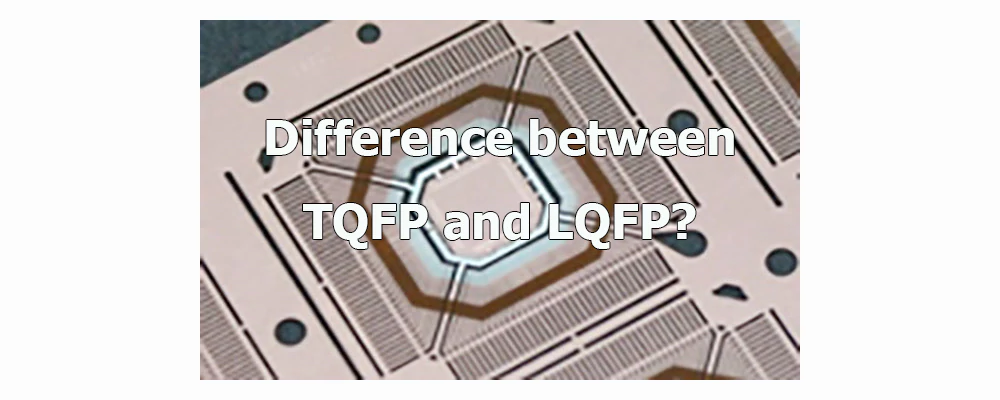Integrated Circuit (IC) packages play a pivotal role in modern electronics, facilitating the connection between the silicon chip and the external world. Among the numerous packaging options available, the Thin Quad Flat Package (TQFP) and the Low-profile Quad Flat Package (LQFP) stand out as popular choices, each offering distinct advantages and functionalities.

Understanding TQFP and LQFP
TQFP (Thin Quad Flat Package): TQFP is characterized by its square or rectangular shape and a low profile. It features a thin body and leads (pins) extending from all four sides of the package, providing excellent space utilization on the circuit board. The TQFP package is prevalent in various applications due to its compactness and ease of assembly.
LQFP (Low-profile Quad Flat Package): LQFP shares similarities with TQFP but is distinguished by its lower height profile. The leads of an LQFP are positioned along the sides of the package, offering a relatively larger surface area for the device’s connections. This design aids in reducing the overall height of the package, making it suitable for applications with height constraints.
What's the difference between TQFP and LQFP?

Size and Pin Count:
TQFP: TQFP packages are available in various sizes, accommodating a wide range of pin counts, typically ranging from 32 to over 200 pins. The square shape aids in efficient use of PCB real estate.
LQFP: LQFP packages are often preferred for applications needing higher pin counts (up to 176 pins). Despite accommodating more pins, the low-profile design helps manage space constraints.
Thermal Considerations:
TQFP: The thin body of TQFP packages might pose thermal management challenges, especially in applications requiring high power dissipation. Adequate heat sinking or thermal design considerations become essential.
LQFP: LQFP’s larger surface area aids in better thermal dissipation, making it suitable for applications demanding enhanced thermal performance.
Assembly and Handling:
TQFP: TQFP’s lead configuration allows for easy manual soldering or automated pick-and-place assembly due to its leads extending from all sides.
LQFP: The larger lead pitch and surface area of LQFP packages aid in ease of assembly and inspection, making them suitable for various manufacturing processes.
How to choose TQFP and LQFP?
Selecting between TQFP and LQFP depends on the specific requirements of the application. TQFP excels in space-efficient designs and ease of assembly, while LQFP is preferred for applications needing higher pin counts and enhanced thermal management.
Conclusion
As technology evolves, newer packaging options might emerge, catering to evolving industry needs. Advanced packaging technologies focusing on miniaturization, increased pin density, and improved thermal performance continue to reshape the landscape of IC packaging.
In the realm of electronics, the choice between TQFP and LQFP goes beyond mere packaging; it’s a strategic decision that impacts the design, functionality, and performance of electronic devices.










